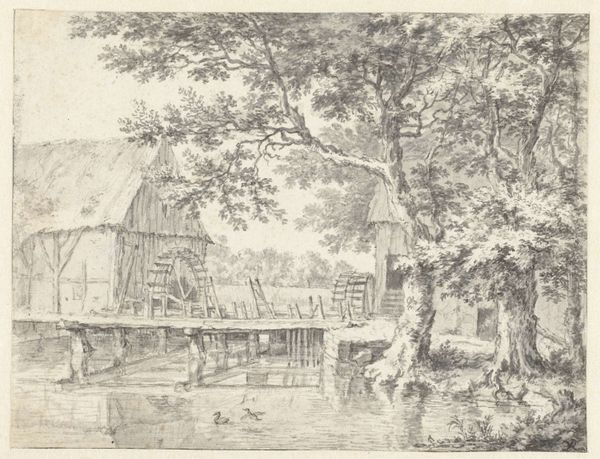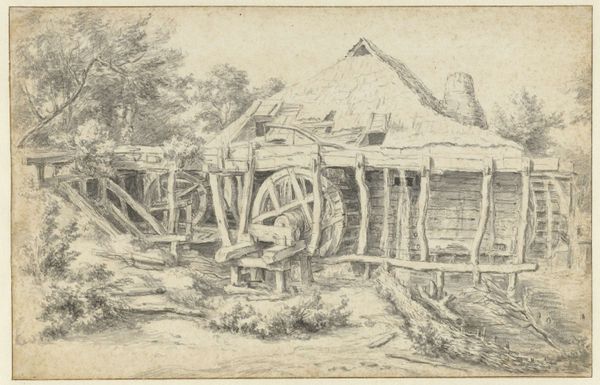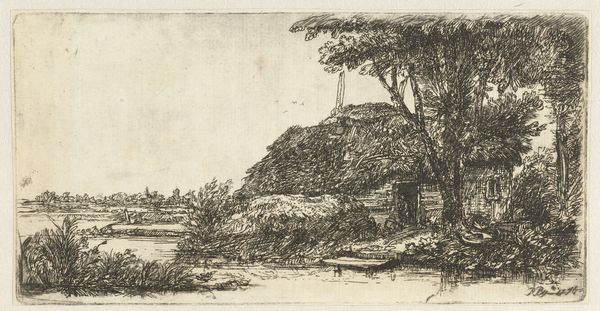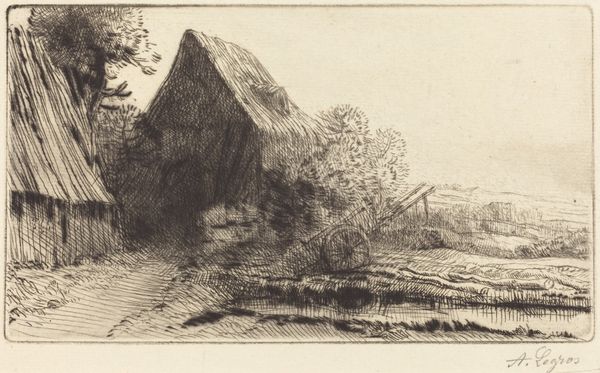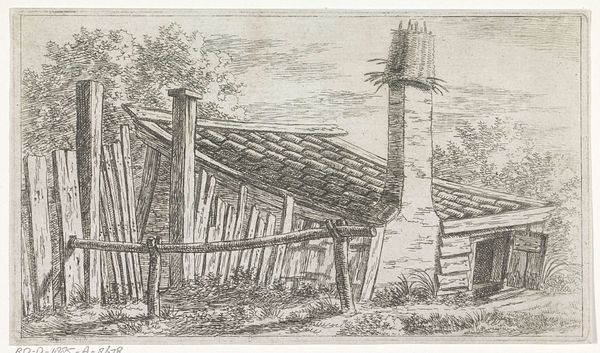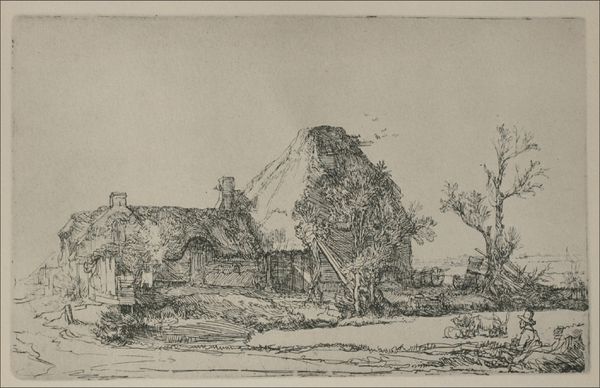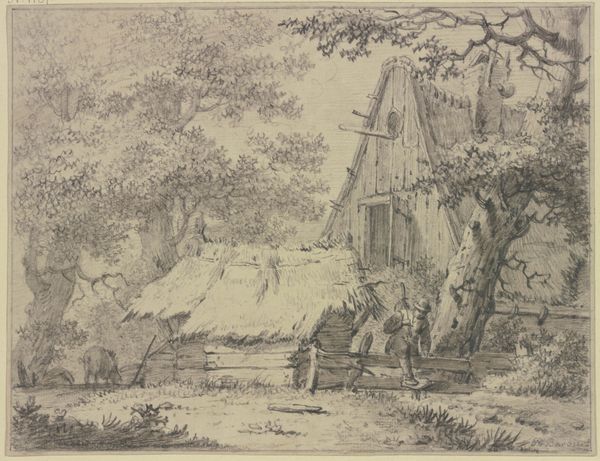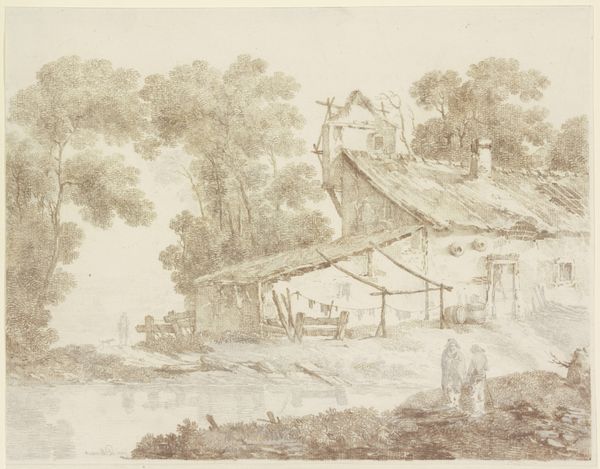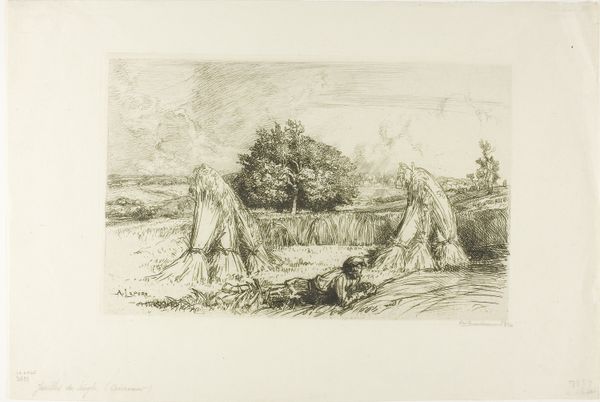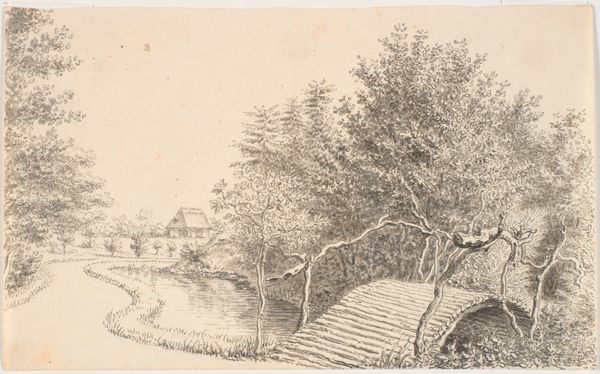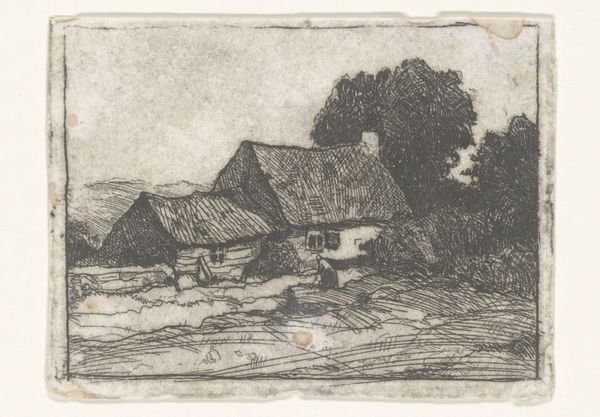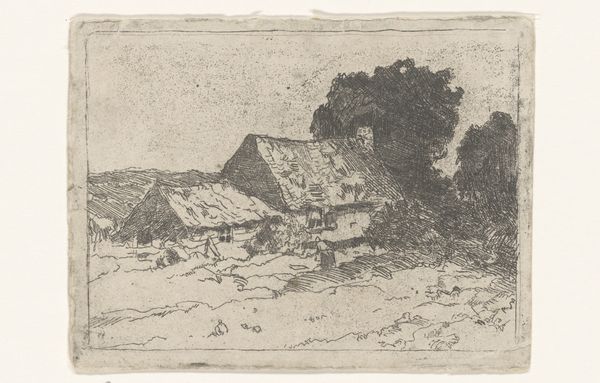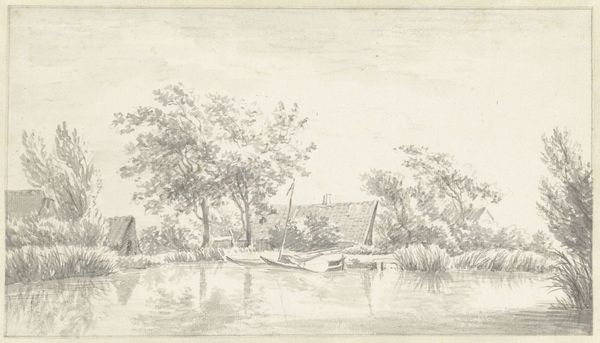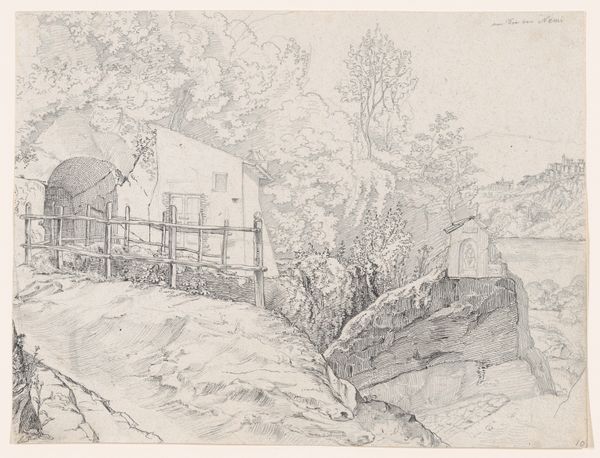
drawing, print, paper, ink, chalk, graphite
#
drawing
# print
#
landscape
#
paper
#
ink
#
sketchwork
#
romanticism
#
chalk
#
graphite
#
realism
Dimensions: 221 × 320 mm
Copyright: Public Domain
Curator: Welcome. We are standing before "Farmyard", a drawing by George Morland, dating from around the late 18th century. It’s rendered in ink, graphite, and chalk on paper. Editor: My first impression is one of quiet desolation. There’s a sense of decay in the structures depicted, yet the overall composition possesses a certain rustic charm. Curator: Indeed. Morland, despite sometimes portraying idealized rural scenes for urban consumers, also captures the often harsh realities of agrarian life. The materials themselves speak to this – inexpensive chalk and graphite, readily available, reflecting the working class life depicted. Editor: I'm intrigued by the artist's treatment of light and shadow. Notice how the stark contrasts accentuate the texture of the wooden walls and thatched roof. This technique emphasizes the materiality of the structures, bringing them forward. Curator: Absolutely. And consider the social context: rural England was undergoing significant changes. The labor of rural people was drastically changing because of economic policy in Britain at the time. Morland shows a rurality facing social issues and change. Editor: I can appreciate that. Although to my eye, there’s also an element of romanticization. Even amidst the dilapidation, the scene carries a certain picturesqueness. The framing, the light - they all lend a compositional harmony to this smallholding. Curator: It's a perspective of Romanticism layered on reality. One might ask for whom was this rural simplicity depicted, and for what audience? The art market and production in England reflects class divides and consumer desires. Editor: Very good points. And those darker areas on the sketch, where he used charcoal: notice that the very darkest point is the edge of the barn closest to the viewer; Morland uses that formal placement to pull us right in! Curator: Indeed. Examining "Farmyard" then invites contemplation on the nature of work, wealth and the consumer economy even today. It invites one to study social issues through materials, which leads to interesting discoveries. Editor: Indeed, the artist uses a humble collection of lines to build quite a powerful perspective in landscape art, creating something very vivid and quite unforgettable from very humble elements.
Comments
No comments
Be the first to comment and join the conversation on the ultimate creative platform.
